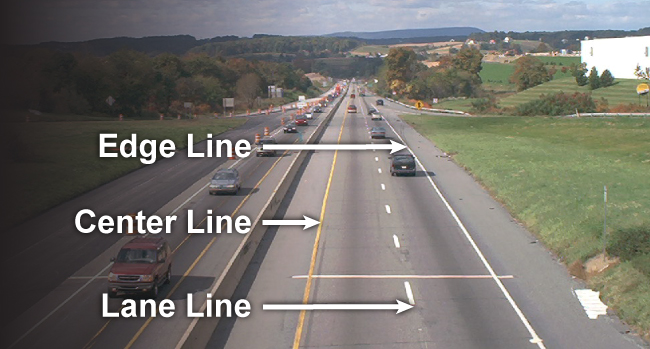
Last winter the International Road Safety Symposium was held in Vancouver. That event discussed how to enhance road safety for all users as well as why the Safe Systems approach is the only way to evaluate and assess road design and use. I wrote about some of the innovative work discussed at the conference here.
Several countries in Europe have embraced the Vision Zero concept which is to aim for no road deaths by any users on road systems. Key to the Vision Zero or Safe Systems approach is to design for all road users (vehicular, transit, bike and pedestrian) , adopting lower speeds and emphasizing safety for all.
One of the conveners of that conference was Dr. Tarek Sayed who teaches civil engineering at the University of British Columbia and has been at the forefront on research to mitigate road crashes. Denise Ryan in the Vancouver Sun reports on one of Dr. Sayed’s latest research findings that show a very simple way to decrease crashes~just make highway lane markings bigger.
In a recently published study Dr. Sayed found that overall crashes could be reduced by over 12 percent and vehicles leaving the road could be reduced by 19 percent simply by widening the “longitudinal pavement markings (LPMS)” on the road. If highway markings are widened from 4 to 6 inches and in some strategic areas widened from 4 to 8 inches, crashes are reduced.
Eight years of data was collected on crashes in specific areas in British Columbia, Alberta and Quebec. After road markings were significantly widened, crashes were dramatically reduced. In British Columbia, widened road markings reduced collisions by over 27 percent.
The study was conducted in three Canadian jurisdictions, B.C., Alberta and Quebec, in partnership with government authorities over a period of eight years, comparing before-and-after data. According to the study, the widths of the LPMs were increased between 2012 and 2013, and showed a dramatic reduction in accidents. Total collisions in B.C. were reduced by 27.5 per cent.
As Dr. Sayed observes “Road safety is extremely important. We talk about COVID-19 all the time, but we have 1.35 million (people) getting killed on the roads every year worldwide…We want to design highways that are forgiving and will minimize the chance of error by the road-user. In this case we want to help the road-user to stay in his own lane by making the road markings more visible.”
It’s extraordinary that something as simple as wider markings can so significantly reduce vehicular crashes. Denise Ryan’s article also offers the sobering statistics which show how far behind Canada is in managing traffic crashes.
The annual cost to the economy of crashes is 62.7 billion dollars, as well as 1,900 lives lost and 165,000 injuries. That’s per year.
In comparison this chart with data from 2015 shows that road mortality rate per 100,000 population. Canada’s rate of vehicular crash deaths was 5.8, higher than Portugal at 5.7, Italy at 5.63 and Spain at 3.6. Three European countries that have embraced the Safe Systems approach include the Netherlands with a rate of 3.9 crash deaths per 100,000, Denmark at 3.1 and Sweden at 2.7.
We need to do better. Here’s a short YouTube video from Australia describing the Safe Systems Approach.
Image: USArmy












As well as visibility of markings generally, including in the rain when the road surface is reflective.
As a side note for those who last took a driving test in the 1980s like me, a double wide line [now] means that the lane will end or exit. So if you are in an outside lane and a double wide line appears on your left, that means your lane is exitting.
This is from the Ontario website, but applies in BC, too:
Broken lines that are wider and closer together than regular broken lines are called continuity lines. When you see continuity lines on your left side, it generally means the lane you are in is ending or exiting and that you must change lanes if you want to continue in your current direction. Continuity lines on your right mean your lane will continue unaffected.
https://files.ontario.ca/3-4.jpg
https://www.ontario.ca/document/official-mto-drivers-handbook/pavement-markings
Simple and excellent improvement. Highway lane markings in general are of an inferior standard in BC. The reflectors on these marking are really need in greater quantity also – always cheapening out here in BC.